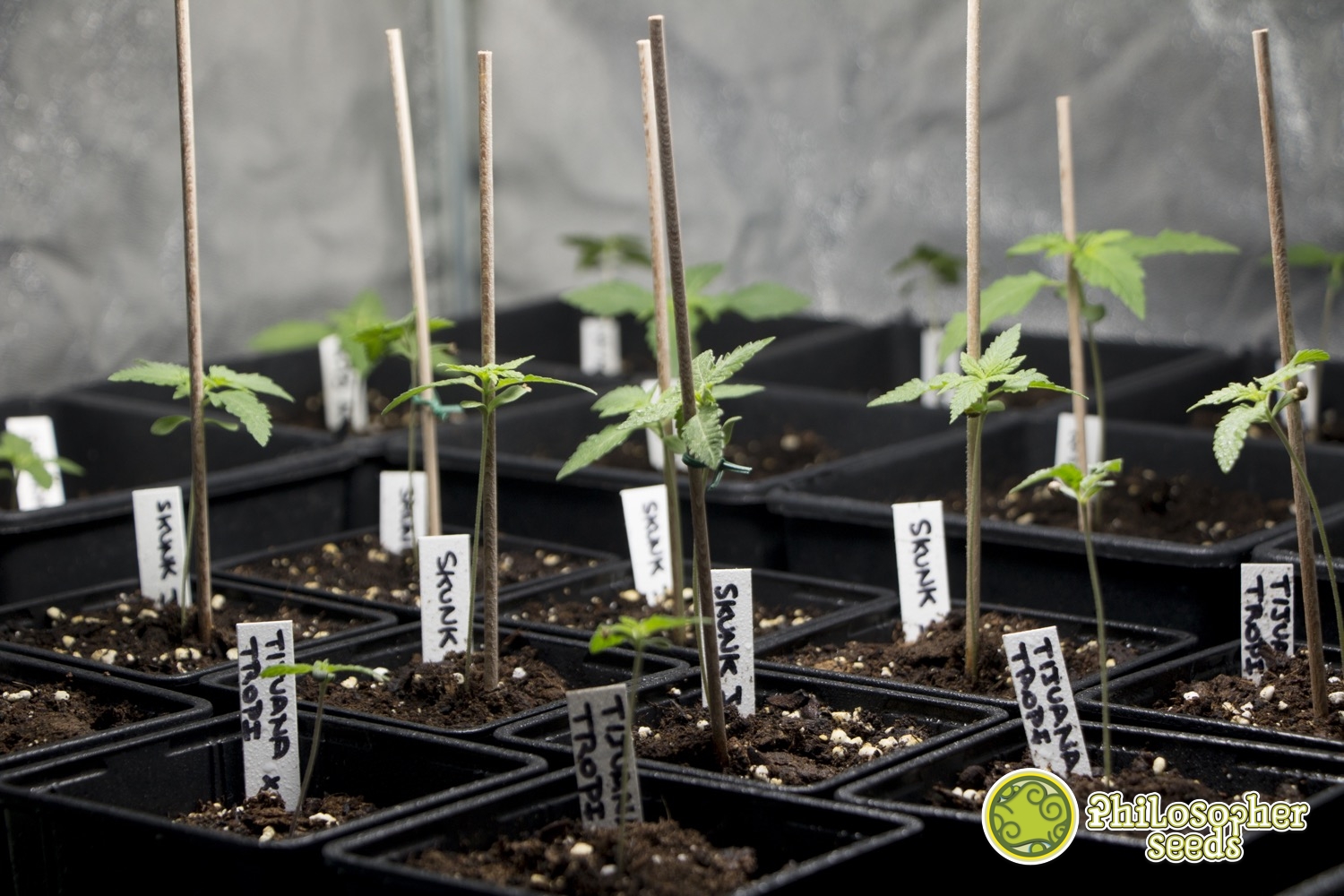The pollination of cannabis
List of contents
Pollination is a process that we do not usually pay too much attention to, despite the fact that it generates and ensures biodiversity throughout the world, in addition to the fact that without it our subsistence would be impossible. And when we talk about cannabis, it is undoubtedly the alpha and omega of the entire biological process of the plant. That is why it is important to understand how it works to get the most out of our crops.
Cannabis can be both a monoecious plant species (plants that can be of both sexes, hermaphrodites) and dioecious (meaning that male and female flowers are borne on separate plants). Both types of cannabis exist in nature, although hermaphrodites mostly only express themselves under certain stress conditions. For example, if a female cannabis plant senses imminent death, she will begin to express male characteristics in order to self-pollinate.
Cannabis transmits its DNA sexually through the act of pollination. Males develop clusters of flowers that spray pollen from their anthers (the part where a stamen ends). A single male flower can produce 350,000 grains of pollen and this genetic material of microscopic size is transported to female plants by the wind (or by pollinating insects such as bees) and can travel great distances, even tens of kilometers, when conditions are favorable. .
The purpose of this pollen is to fulfill its genetic mandate to impregnate as many females as possible. Finally, pollination occurs when the pollen reaches the stigmas of the female, which causes the plants to produce seeds inside the pistils, which is their reproductive organ, to perpetuate the species.
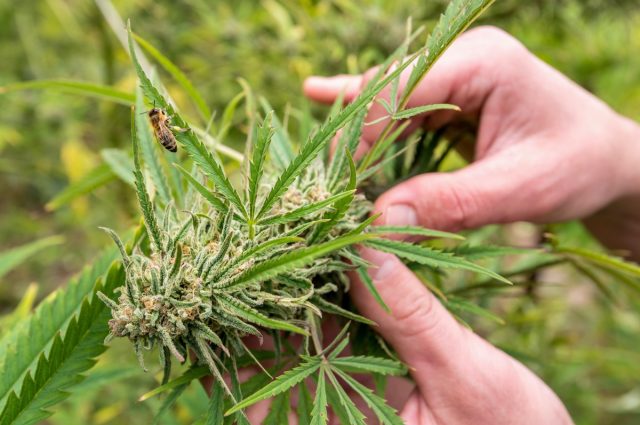
Why pollen can be dangerous for your crop
In the 1970s, marijuana growers discovered that avoiding pollination by removing male plants or producing only females (through propagation by cuttings or planting feminized seeds) could greatly increase the yield and potency of a plant. crop. This works because cannabis is one of the few plant species that can actively increase the number and size of its female sexual organs in response to prolonged virginity: the longer female plants go unpollinated, the more flowers are produced and the bigger they become.
This revelation started the modern practice of weeding out males and selecting only females for cultivation, as in a very real sense, preserving female cannabis virginity is valuable. And it is that cannabinoids, such as THC and CBD, are concentrated in the tissue and trichomes of the female flower. In fact, a 1998 study published in the 'Journal of the International Hemp Association' (and taken as a reference) already found that pollination decreased the yield of essential oils in cannabis flowers by 56%.
For this reason, today, most growers avoid pollination by eliminating the males from the crops, in order to obtain "seedless" marijuana (often called "sinsemilla"), since when the plants invest energy in the production of seeds, they produce fewer cannabinoids such as THC or CBD, so the resulting buds suffer from a decrease in their medicinal or recreational value. Furthermore, smoking marijuana with seeds is, why not say it, quite unpleasant.
What is self-pollination?
Self-pollination refers to a flower having the ability to pollinate itself and other flowers produced by the same plant. It does not need the pollen of another plant for fertility. Hermaphrodite and monoecious species, which make up a large part of plant species, have the potential to self-pollinate.
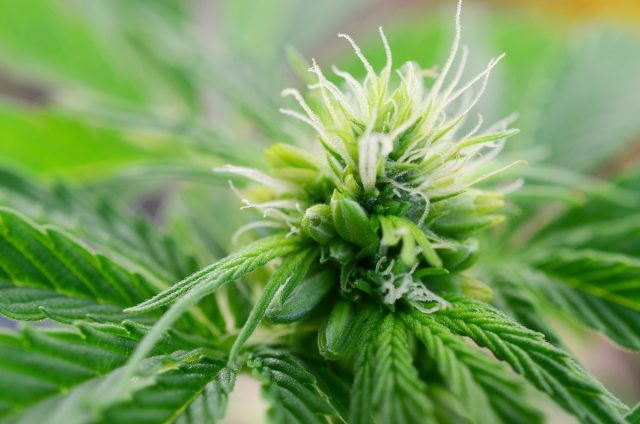
A self-pollinating flower has both male and female reproductive parts. The pollen will collect on the male anthers of the plant and then transfer to the female stigma of the flower to complete the fertilization process.
Some self-pollinating flowers can even pollinate before they bloom depending on the natural growth of the bud. As the flower stigma grows through the anthers and the flower begins to unfurl, it effectively transfers pollen between the male and female parts of the flower.
The risks of cross-pollination
The opposite of self-pollination is cross-pollination, which occurs when one plant variety pollinates another plant variety, either intentionally through human intervention or through natural causes. It is important to remember that only plants of the same or very closely related species can interbreed with each other. Even though marijuana and hemp crops are generally used for quite different purposes, they are closely related and can cross-pollinate each other.
Although marijuana and hemp are different varieties of the same species (Cannabis sativa), the way these plants reproduce can lead to big differences in the type, potency, and amounts of chemicals they express.
For example, when hemp and marijuana cross-pollinate, the quality of each decreases: the potency of cannabinoids in female marijuana is reduced, while the THC in hemp can be increased. This is a recipe for disaster. And indeed, cross-pollination can ruin commercial crops and cost untold financial damage.
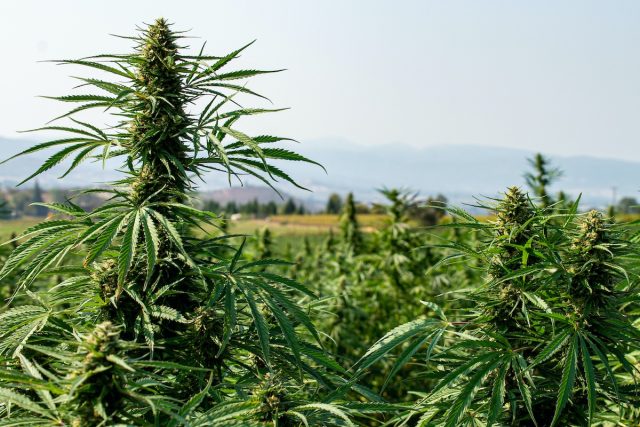
How to avoid pollination?
Nowadays, most of the seeds on the market are feminized, since growers prefer to guarantee 100% (well, let's say 99%) female offspring to produce seedless cannabis flowers, that is, buds at their maximum expression of cannabinoids and terpenes.
But before these seeds burst onto the market, growers cultivated their crops with regular seeds, which produce both female and male marijuana specimens. Therefore, growers of yesteryear had to be very vigilant in detecting male plants and removing them from their cultivation.
How to tell if a cannabis plant is male or female
Cannabis plants do not show their sex in the vegetative phase, but when flowering begins. This phase, called “pre-flowering”, begins in nature when light conditions change and days get shorter.
Growth period of cannabis (Vegetative growth)
The growth period or vegetative phase is a fundamental part of the development of the cannabis plant. In this post we take a look at the fundamental aspects of this important phase, such as light, nutrition or irrigation parameters, both in indoor and outdoor crops.
And this is when we must be very careful. The part to look at is what some commonly call the “axil”, the junction between the main stem and the branches. Right there, at the bottom, you can see what is called floral primordia or pre-flowers:
- In the case of female plants, they appear as a small rounded pear-shaped bag from which two white stigmas emerge (the part of the pistil that receives the pollen), which many growers commonly call "little hairs".
- Male plants, on the other hand, will also form a bag but without any stigma. It can even be seen that the flower is made up of five sepals, the pieces that make up the calyx and that are the ones that will open to reveal the stamens with the pollen.
The key to knowing if a marijuana plant is male or female is to see if those stigmas (hairs) appear or not. Later, already well into the flowering phase, the male flowers open, revealing a structure inside that resembles a small bunch of bananas. They are the stamens and will eventually spread their pollen to fertilize the female flowers.
On the other hand, the female cannabis plants, after indicating their female sex with the first stigmas, will generate clusters of these flowers with more "hairs" that will begin to be covered with resin glands (trichomes) until they finally accumulate in the form of buds.
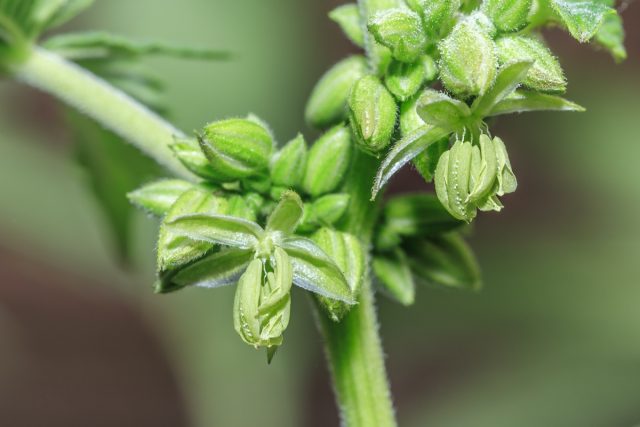
Cannabis pollination to get seeds
But beyond identifying the males and removing them for seedless buds, as cannabis users progress and gain more experience growing, they reach a point where the decision is made to grow seeds rather than start over. This is the best way to preserve (or even strengthen) certain genetics that due to their characteristics are worth perpetuating; or to practice hybridization between two varieties whose properties you want to cross.
For reference, from the time the male begins to flower until he opens his first flowers to release pollen, two to three weeks pass. Although in just 10 days you begin to see those small floral "sacs" (which are nothing more than male flowers), at the same time that you also begin to see the first stigmas of the female plant.
When the male plant is mature, the flowers will open their sepals, exposing the stamens and releasing pollen into the air. This is the moment in which we must proceed to pollinate, since if we wait several days, the pollen can considerably lose its fertility. In addition, with humidity above 75%, pollen begins to die quickly, so it is better to keep it as dehydrated as possible.
The females are ready to be pollinated after their early flowering stretch and when large stacks of bud-forming flowers have developed. The best time to pollinate the female is therefore when the flowers have the longest and whitest stigmas (the white "hairs"), which is usually after four or five weeks from the beginning of flowering, always depending on each variety. There are even varieties that can be pollinated from the 20th day of flowering.
But remember that the times of the male and female are different, as the males enter the flowering phase before the females: as a general rule, male plants tend to mature around 2 weeks before females. It is with this temporary deviation that you have to work, because the more pollen the male has and the more fertile it is, the greater the probability of pollination by the female.
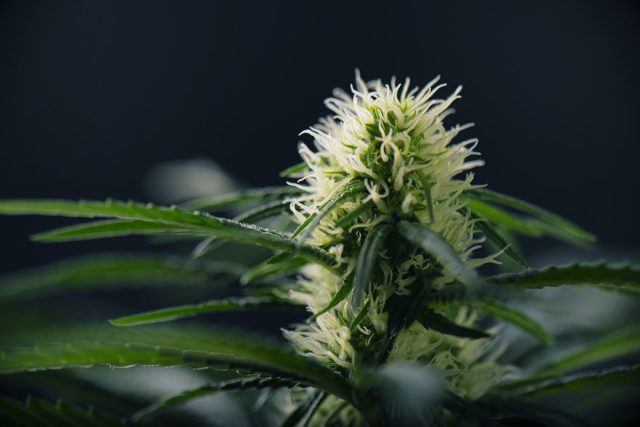
Applying pollen for pollination
The application of the pollen is very simple: if we have cut the flowers and saved the pollen, with the help of a brush or even with your own fingers, spread the pollen over the feminized plant. Do it repeatedly for two or three days.
However, there is nothing better than fresh pollen taken directly from the male flowers. So another form of pollination consists of directly taking the male plant and shaking it over the females, in such a way that its pollen falls on the buds.
It is important to turn on the fans before shaking the plant so that the pollen moves everywhere. The temperature of the room where pollination occurs should be at 24 ºC with a humidity of no more than 65%. The less humidity there is will allow the pollen spots to remain suspended in the air for longer, instead of falling directly to the ground.
How to know if a plant has been pollinated?
The pollen, once it touches the stigmas of the female plant, still takes between 3 and 5 days to reach the ovary for fertilization to take place. You can tell if a female plant has been pollinated by looking at the stigmas, which change color during flowering, turning from white to dark orange or red. In flowers that have not been pollinated, the entire stigma will change color. However, after exposure to pollen, only the tips of the stigmas darken, while the rest remain white.
In general, marijuana seeds take about 6 weeks to fully develop (always depending on the variety). At the end of flowering they will be ready to pick, just as the seeds start to darken from green to brown or dark grey, and the calyxes start to open up so they can easily come out.
Some plants are literally dying just as the seeds are ready for harvest, so try to keep your plant alive until the seeds start to drop. Seeds can be used immediately or stored in a cool, dry, dark place. Storing cannabis seeds in the right conditions allows you to preserve your favorite genetics for a long time. So don't forget to label them with the date!
—--
References:
- Expansion of female sex organs in response to prolonged virginity in Cannabis sativa (marijuana). Ernest Small & Steve G. U. Naraine.
- Factors influencing the yield and the quality of hemp (Cannabis sativa L.) essential oil. Christoph Meier & Vito Mediavilla.
